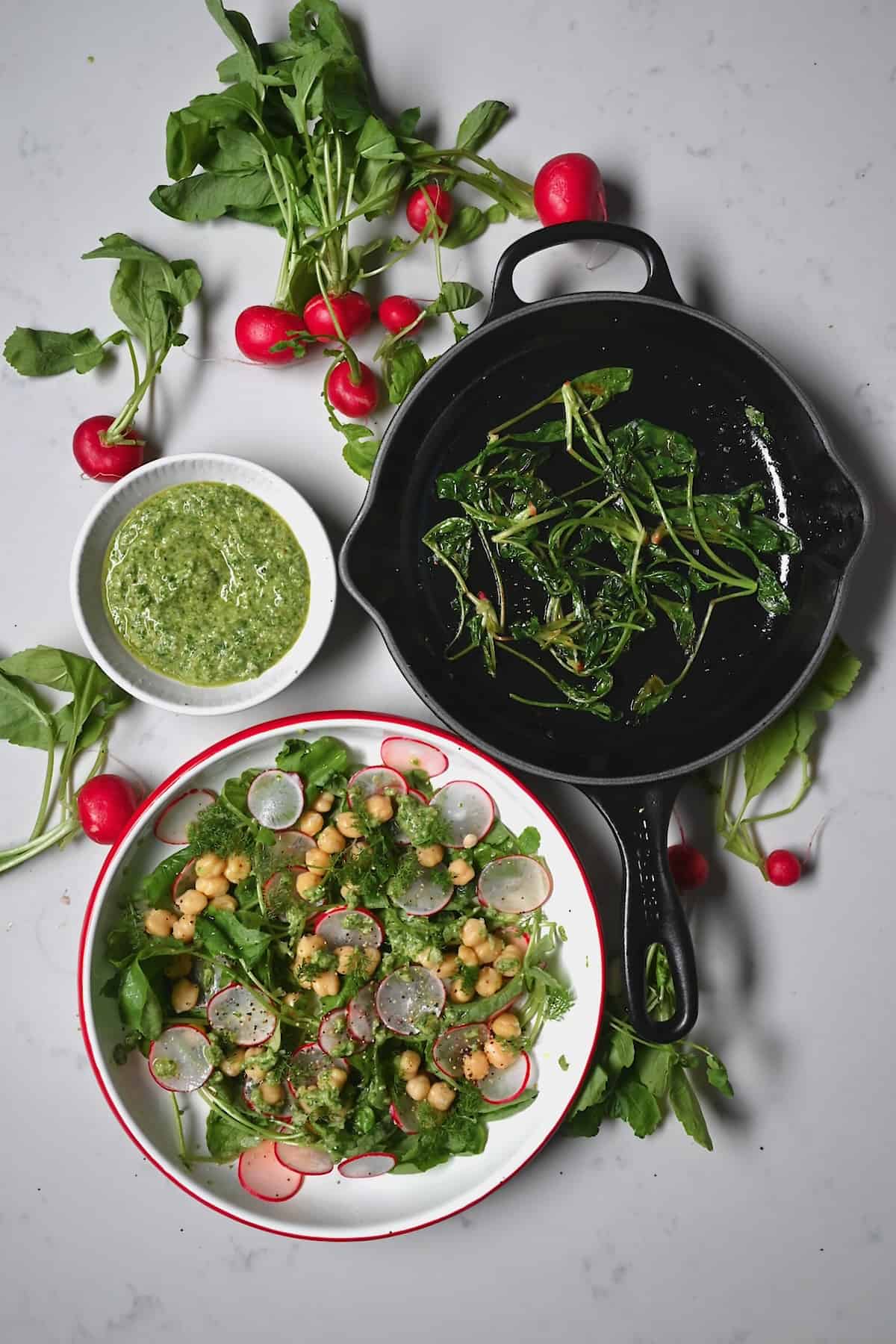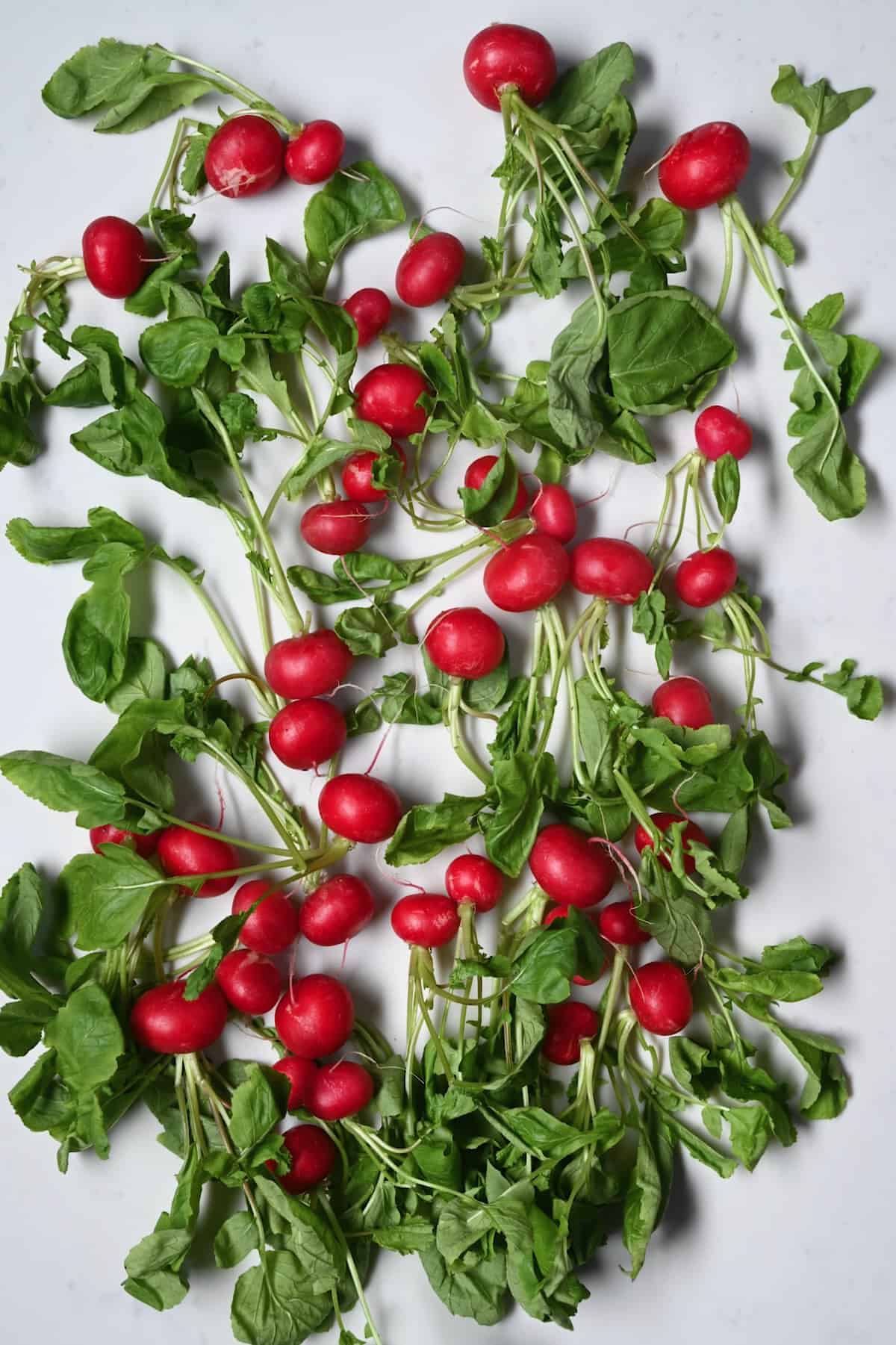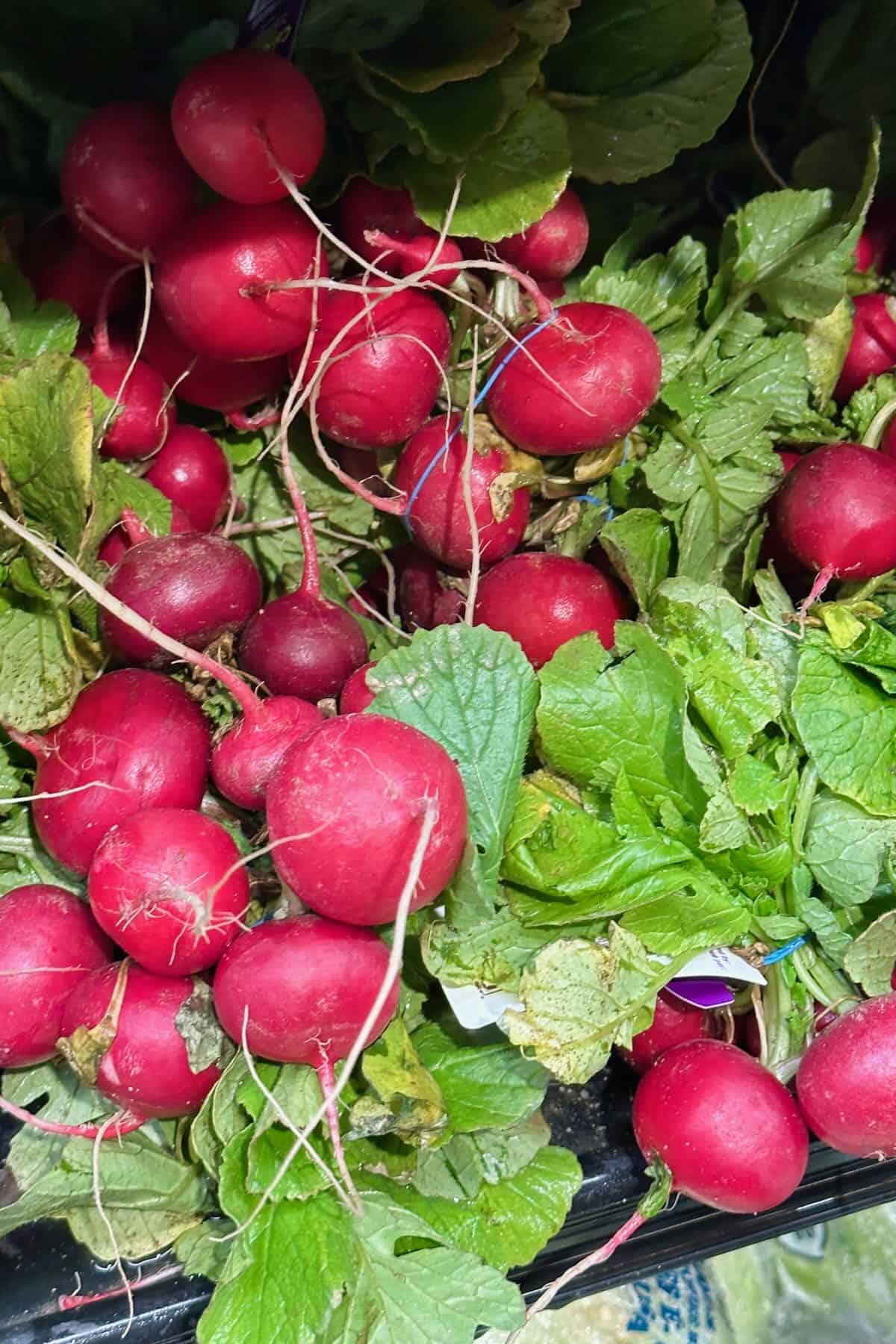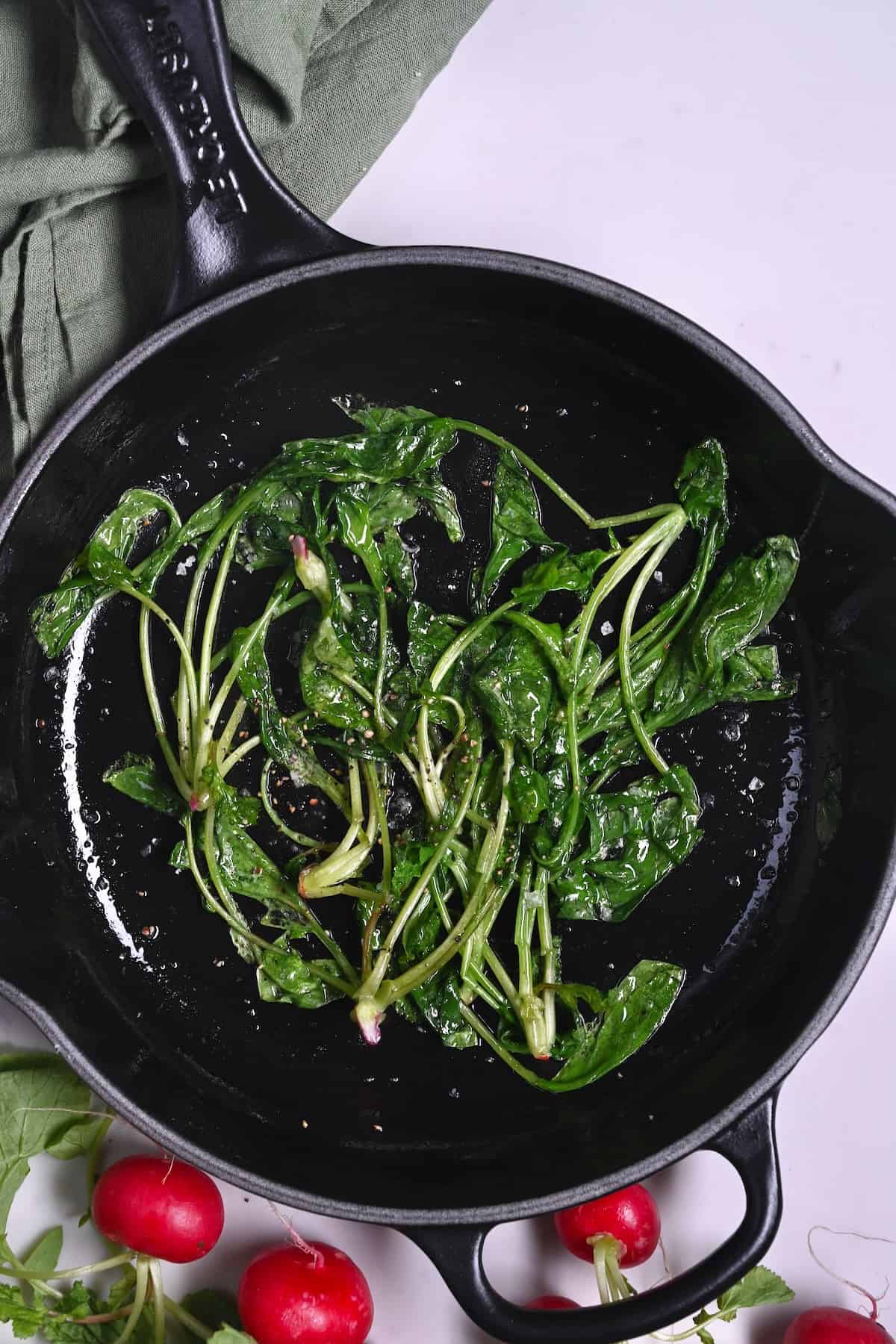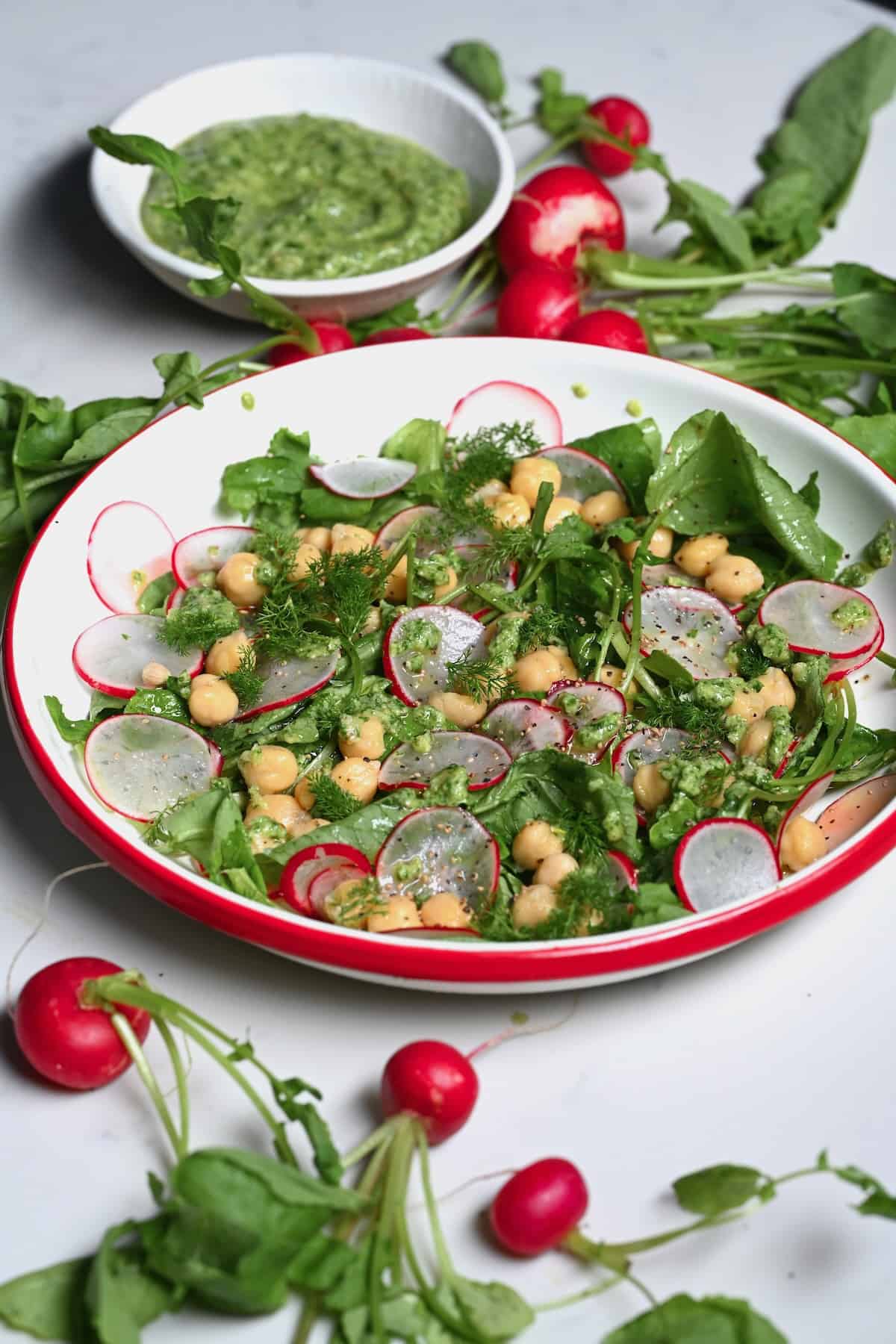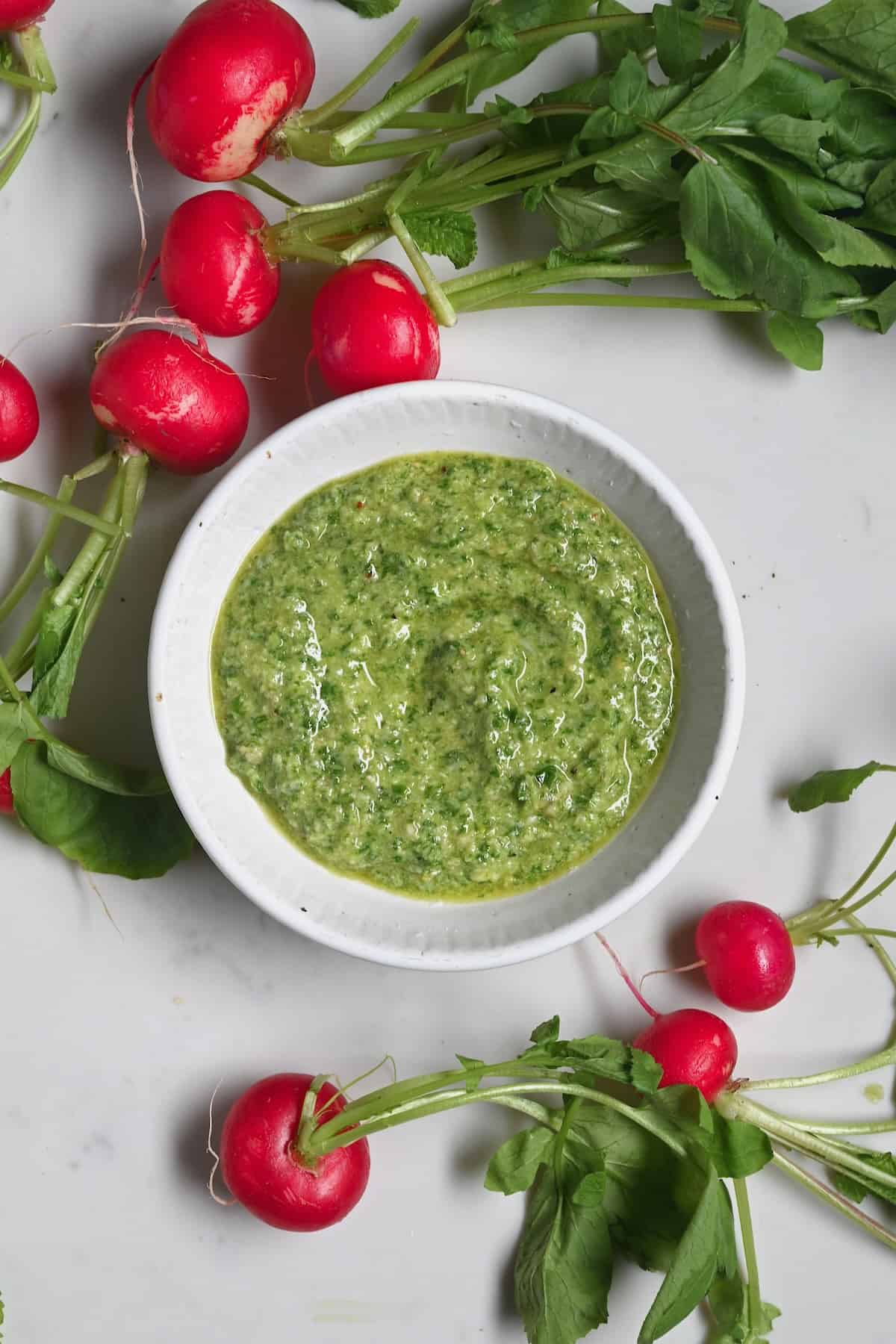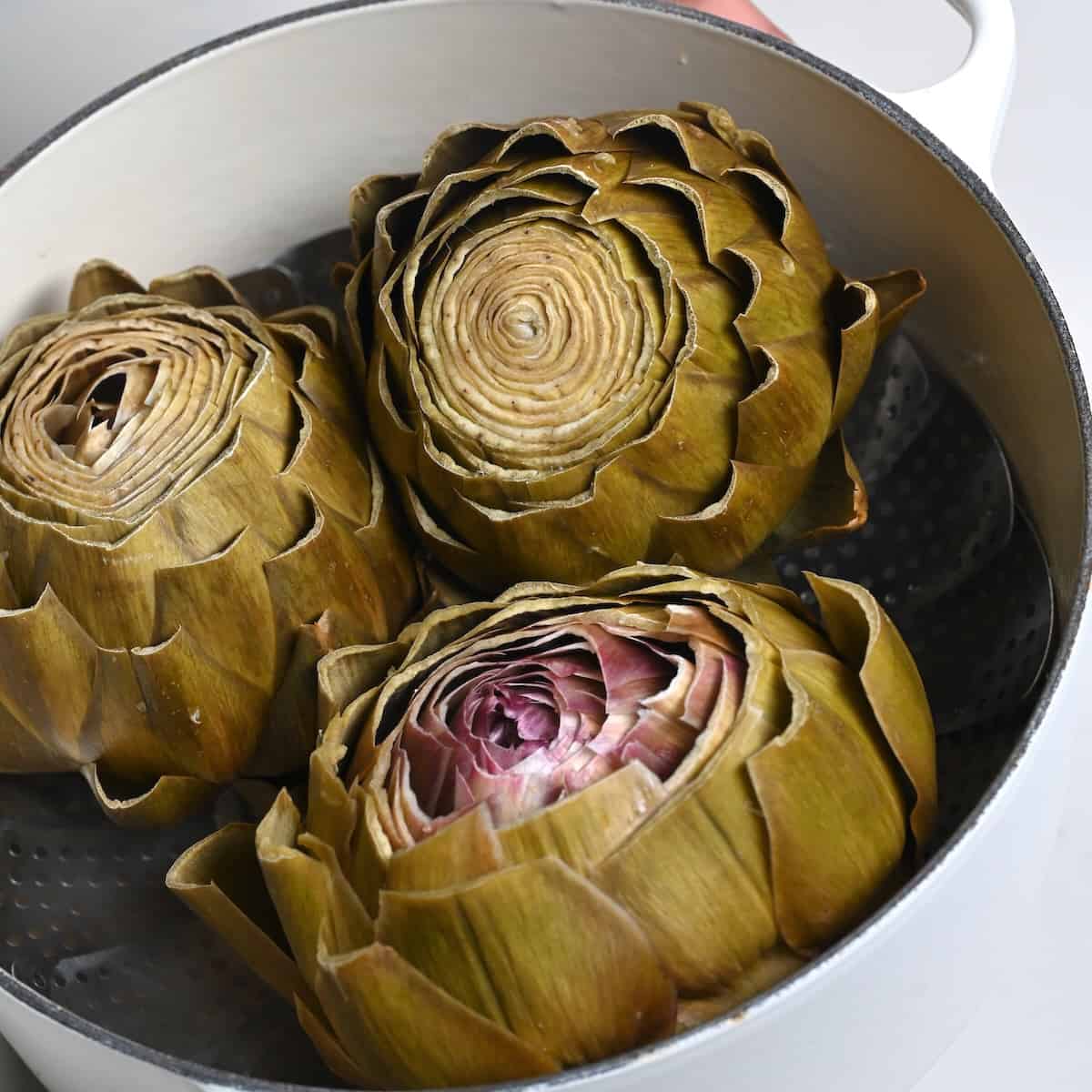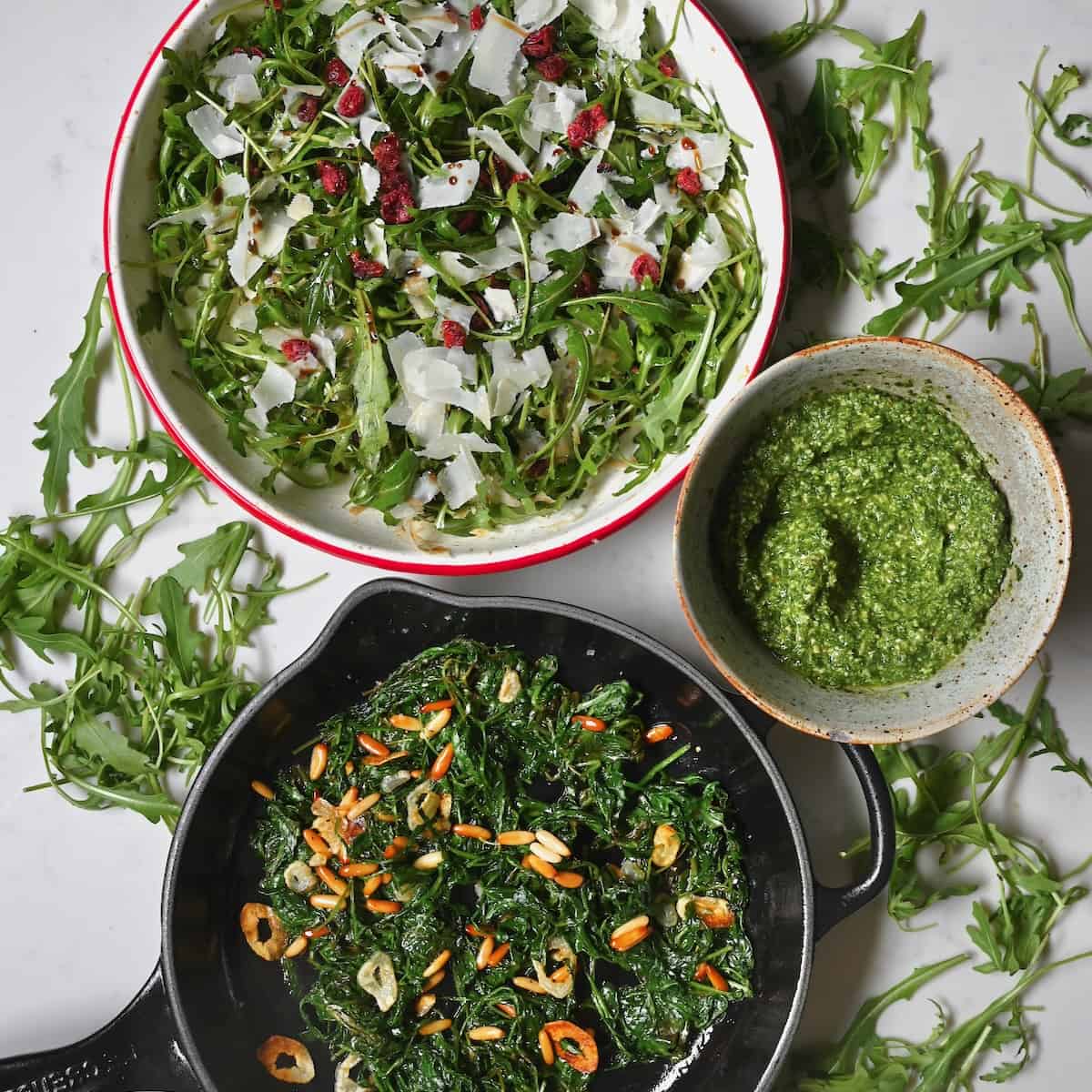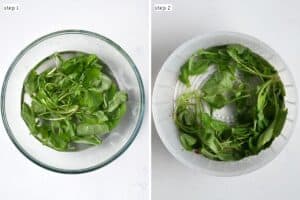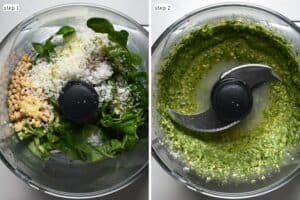When it comes to reducing waste, I’m constantly learning and improving. I’ve learned how to properly organize my fridge and freezer to reduce waste. I also save vegetable scraps to make homemade vegetable stock. I use carrot greens to make carrot leaf pesto, and now it’s the turn of radish greens! In this post, I’ll take you through the benefits of radish leaves and how to store them. Plus I will show you several options for eating radish greens to make the most of this ingredient.
What Are Radish Greens?
These are the leafy tops of the radish plant with wide leaves. They’re a popular ingredient in Korea and China and are used as a vegetable. They are a colorful and tasty addition to salads, cooked into soups, or as a side dish. Their flavor varies based on the variety and maturity. It ranges from earthy and mild to bitter (but not unpleasantly so) and even spicy/peppery. Their flavor is similar to mustard greens or turnip greens. And their usage is similar to that of spinach, kale, and Swiss chard. Like spinach/kale, baby leaves are milder and more tender. Mature greens have a more bitter flavor and tougher texture, though still delicious.
Are Radish Greens Good for You?
First, if you haven’t already guessed, the answer to can you eat radish greens is a resounding yes. They are 100% edible, not poisonous, and can be enjoyed raw or cooked. These leaves can be consumed as radish sprouts, microgreens, or as mature leaves, and there are several benefits:
Radish tops are fairly nutrient-dense, remaining low in calories. They are an impressive source of vitamin K (over 170% daily recommended intake per cup) and Vitamin C (at around 77% of the DRI). They are also a good source of magnesium and potassium, with lower levels of iron. Their high antioxidant content provides anti-inflammatory benefits. It may reduce the risk of several chronic diseases, including Alzheimer’s, heart disease, cancer, etc.
Where to buy radish greens? The radishes will likely come with the tops attached if you get farm boxes. You can also buy a bunch of radishes (connected or separate from the roots) at farmers’ markets and grocery stores. There are several varieties, like green, black, purple, watermelon, and daikon radishes.
What to Do with Radish Greens
How to cook radish greens or enjoy them raw – here are my current top three favorite radish greens recipes!
How To Prepare Radish Greens
To prepare radish greens for eating, all you need to do is wash the leaves well to remove any grit/dirt. Then dry them (using a salad spinner works best) and move on to the recipe of your choice. Young greens are milder/more tender, perfect for enjoying raw or cooked. However, mature leaves are tougher/more bitter, so they work best when cooked (which mellows the flavor slightly).
Sautéed Radish Greens
If you like garlic sauteed spinach and other greens, try sautéed radish leaves. I use the same method as my spinach recipe, relying on garlic and lemon juice to enhance flavor (add a pinch of red pepper flakes for heat). Heat the oil (or butter) with a minced clove of garlic until fragrant. Add the greens and sauté for 2-3 minutes until they wilt. Then serve with a squeeze of fresh lemon juice and optional salt and pepper. Delicious!
Radish Greens Salad
This super-easy radish leaf salad recipe combines the greens with a little olive oil, salt, and lemon juice. Toss to combine. Optionally, add chickpeas for protein and/or radish roots for color for a simple, nutritious salad.
Radish Greens Pesto
Pesto is practically a staple in my kitchen, perfect for dipping, spreading, and mixing (especially into pasta!). Best of all, it’s really simple to prepare. For radish green pesto, you just need a handful of ingredients, including the bold flavors of radish tops, garlic, parmesan cheese, and pine nuts. Use a food processor to blend it into a smooth radish-green pesto, and voila! You could use a 50/50 combination of basil and radish leaves for a milder radish pesto. Keep scrolling to the recipe card for the complete recipe with ingredient measurements.
How to Eat Radish Greens: Bonus Ideas
Add the greens to soups, stews, and curries, To garnish avocado toast, In sandwiches/wraps, Mix into frittatas, quiche, & veggie omelettes, Blend/stir into sauces, In vegetable stir-fry, Use radish greens in recipes in place of spinach or kale.
You can also use steaming or braising methods when cooking the greens. What’s your favorite way to eat radish greens? Let me know in the comments below.
How to Store Radish Greens
Tender/fragile leafy greens don’t tend to store well. To extend their shelf life, remove them from the roots as soon as possible and wash and thoroughly dry them. Then wrap them in a paper towel and store them in an airtight container/Ziplock bag for up to 3 days. You can also blanch them for 10 seconds, then dry them thoroughly to freeze for up to 6 months.
More Ingredient Guides
how to cook artichoke how to cook fennel what is arugula and what to do with it how to cook okra (6 easy methods)
If you have any thoughts or questions about radish leaves, let me know in the comments below. I’d appreciate a recipe card rating and would love to see your recipe recreations – tag me on Instagram @Alphafoodie!





